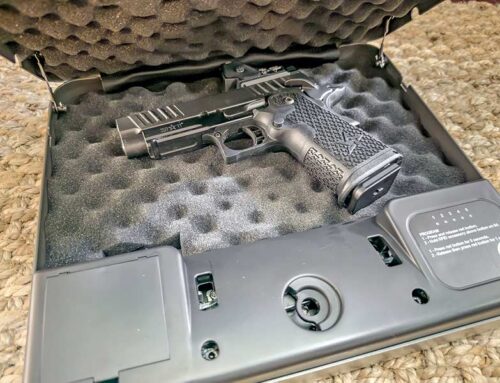Bump stocks have been in the news ever since a Las Vegas gunman used the device to aid in unleashing more than 1,000 rounds into a crowd of innocent concert-goers Oct. 1, 2017. Several states were quick to ban bump stocks, with a federal prohibition going into effect March 26, 2019. The Trump administration ban faced judicial review but was deemed constitutional. Those who violate the bump stock ban can face 10 years in prison and a $250,000 fine.
But what is a bump stock? Perhaps the best way to explore the topic is with a quick true or false quiz:
- A bump stock converts a semi-automatic firearm into a fully automatic machine gun.
- A bump stock is (was) legal because of a loophole in the 1934 National Firearms Act that prohibited machine guns.
- Without a bump stock, it’s impossible to fire a semi-automatic firearm in such a rapid-fire manner.
All answers to the above questions are … false. Let’s explore what a bump stock is — and isn’t — in more detail.
Bump Fire Is a Process
To understand what a bump stock does, it’s helpful to know what bump fire is. Bump fire is a process, or maybe a result, but not a device. Bump fire involves handling and moving a semi-automatic firearm in such a way that the natural recoil pushes the gun forward against a stationary trigger finger.
Imagine holding your trigger finger in a vice so it’s perfectly rigid and still. Now push the firearm forward so the trigger compresses against your stationary finger. That’s an example of a single-shot bump-fire scenario.
Next, imagine allowing the firearm to recoil in such a way that it moves backward after firing, pulling the trigger away from your stationary finger and then pushing it forward again, repeating the process. If you can figure out how to keep just the right amount of forward pressure on the firearm while allowing it to move backward a half inch or so with each shot, then you’ve automated the process of shoving the gun against your stationary trigger finger. As the weapon moves backward, your stationary finger leaves the trigger and allows it to reset. As the gun moves forward, pressure is re-applied to the trigger. As long as you keep applying forward pressure against the gun, it will keep repeating the single-shot firing process until the magazine is empty.
So think of a bump stock as more of a process rather than a device. A bump stock is just an aid to make it easier for the user to bump fire a firearm.
Read the rest: What Is a Bump Stock? | Guns & Gear – USCCA Blog







A couple of points:
1. “…a Las Vegas gunman used the device to aid in unleashing more than 1,000 rounds…”
Interestingly, NO investigative reports says bump-fire stocks were used (MVLVPD final report and ATF FOIA even disagree on how many were present). That issue was raised in the GOA federal case, and the DOJ attorney did not challenge it. A FOIA request to the ATF revealed they have no documentation of a bump-fire stock ever being used in any crime.
2. “The Trump administration ban faced judicial review but was deemed constitutional.”
There are at least six federal lawsuits still pending. What was denied was a preliminary injunction staying enforcement of the ban pending outcomes of the cases. The constitutionality has yet to be addressed in a final ruling.